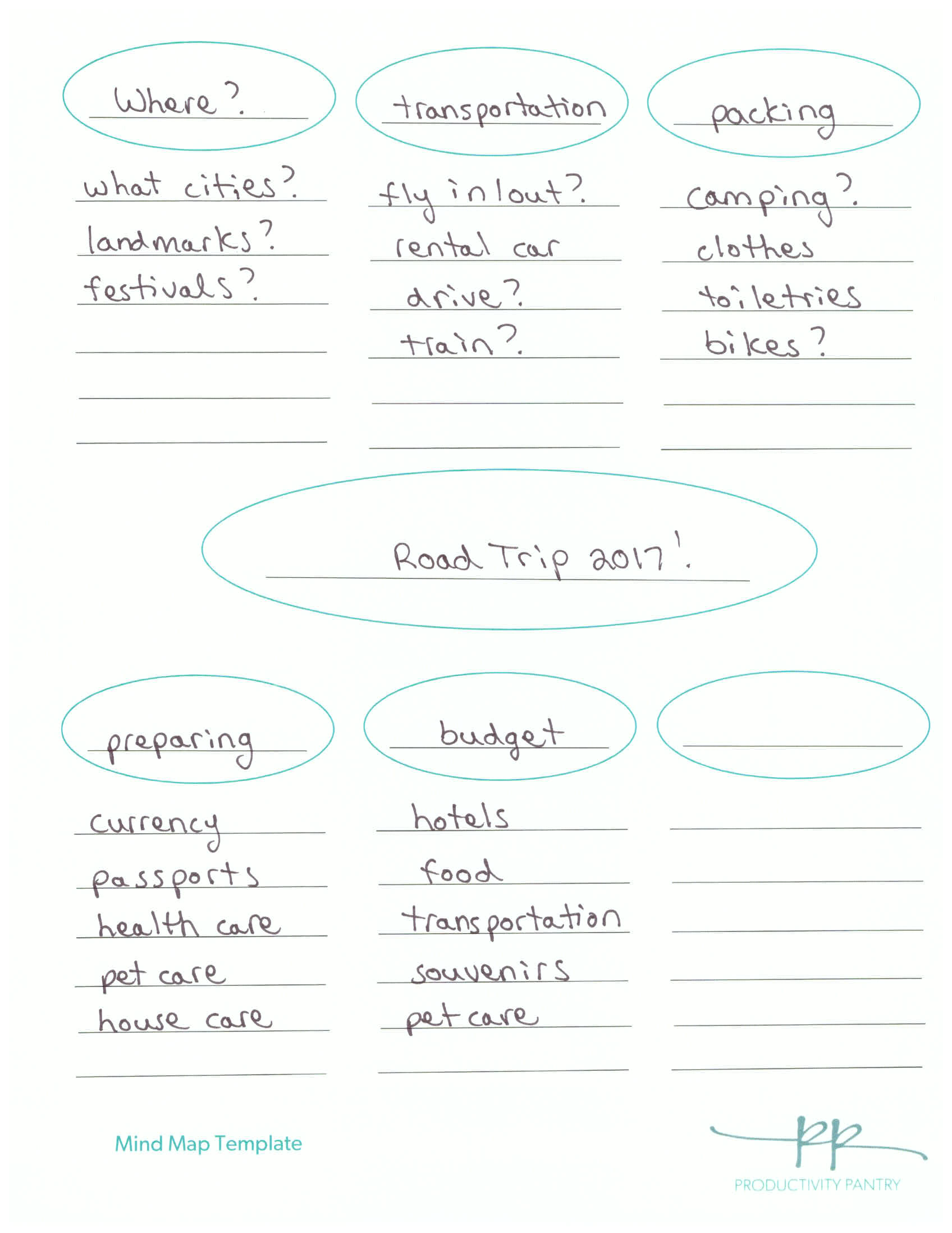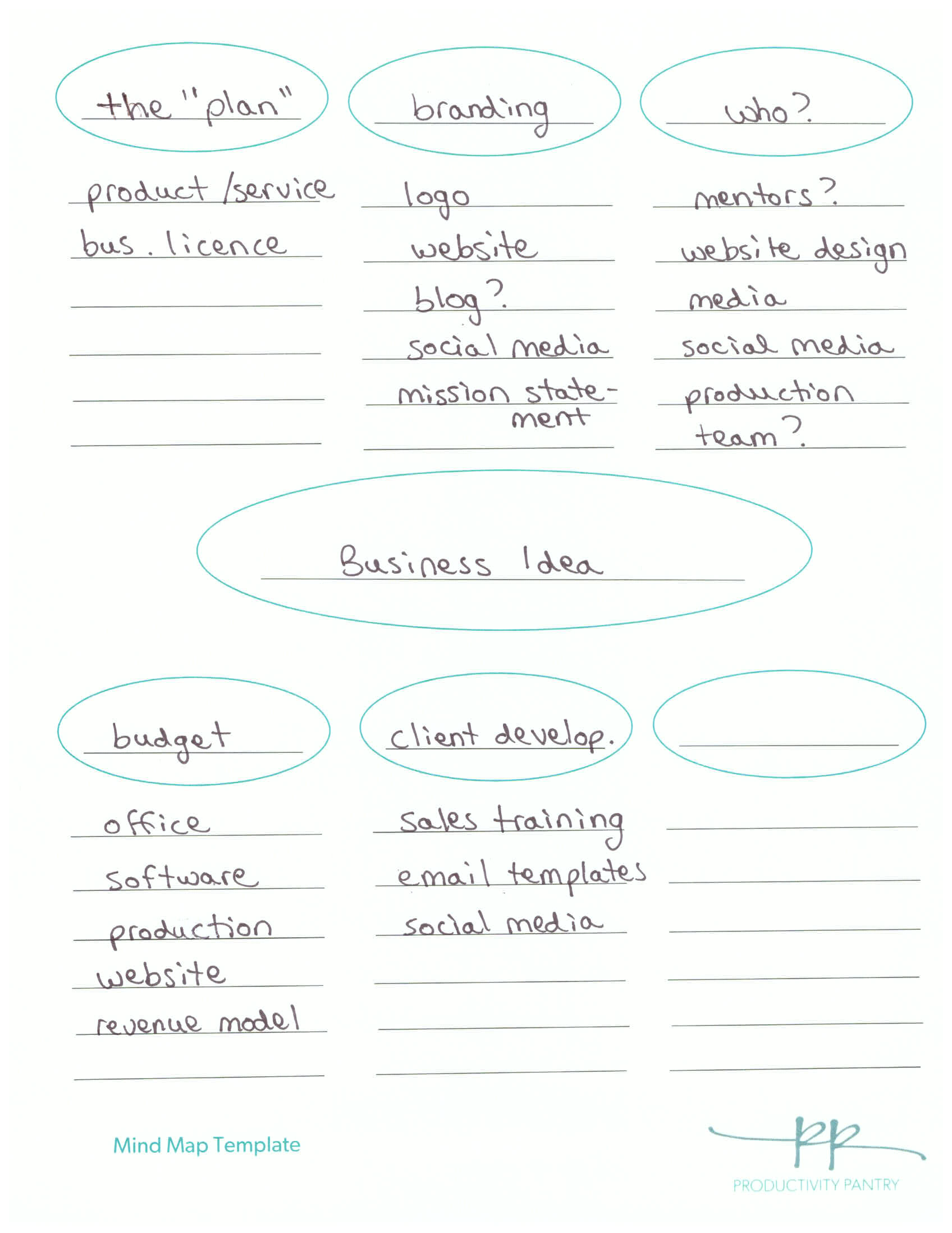It’s the most wonderful time of the year - no, not Christmas, not back-to-school, it’s…

Mind Maps – Your new favourite business resource!
I had coffee with a friend of mine recently, she has just started her business and she was so excited about all the possibilities, and all the work that lie ahead. Her excitement quickly grew to an overwhelming feeling of “too much to do, how do I organize it all”? Enter the Mind Map exercise.
What is a mind map?
Mind map is visual representation of your ideas and concepts. It can act essentially a brain dump of all the ideas you have about a certain project. It allows you to brainstorm all the possible questions and project components, and outline it all in one place. When a mind map is taking shape, it looks a lot like how our brain thinks, thus increasing your capacity to learn and be creative around each item on your map.
There are lots of online software apps that allow for very intricate mind mapping, with extensions for organizational charts, budgets etc. For the sole proprietor, these apps may be a bit too much and all that is required is a quiet corner of a coffee shop, some easy listening tunes and pen and paper.
What can it be used for?
Mind mapping can be done for a variety of different types of projects! Below is a list that only scratches the surface about its usefulness:
- Business plan ideas
- Studying for an exam
- Book notes and their “big ideas”
- Personal projects and sparking creativity
- Systems analysis
- Problem solving
How do you start a mind map?
Each mind map starts with a centralized idea. From there, you “branch” off with subcategories of ideas. Each subcategory then contains the ideas, and perhaps at this point, the minutiae required to successfully complete that idea or category.
Mind maps can be drawn with text, colours, images, symbols and any other visual representation that may speak to you and how you learn.
The great thing about mind maps is ALL ideas and questions should be captured! No matter how broad or how small your question, put it on the mind map to ensure it gets addressed in execution.
They are also best done during your “peak” productivity or strategic thinking time. You’ll want to create a mind map with minimal distractions and during your most alert and creative times of the day.
I’ve included a couple of examples of mind maps below; one is a business application, the other a personal application. You can use a mind map for really any project you can think of; some are going to look a lot more elaborate than others.


What do I do now that its done!
Once you’ve completed your mind map, you should feel less stress and overwhelmed, but still excited at the work ahead of you! Now you can dig into each point individually and start organizing how you can tackle the individual components of the project.
- Assign due dates to each item
- Ensure each item has the people or resources dedicated to it
- Create supporting documents if required – budget, calendar, a content relation manager system, journal, etc
- Celebrate completing items, and refer to the original mind map often to ensure you’re still on track to address each item
Mind mapping is a fun, creative way to infuse energy into your projects – enjoy the process, and let me know in the comments on the latest project in which you used a mind map – the applications are endless!
Now that you’re sold on trying out a mind map for your next project – download a free template here and give it a whirl!!
RELATED – Mind Map Template
RELATED – Setting Daily Goals




This Post Has 0 Comments